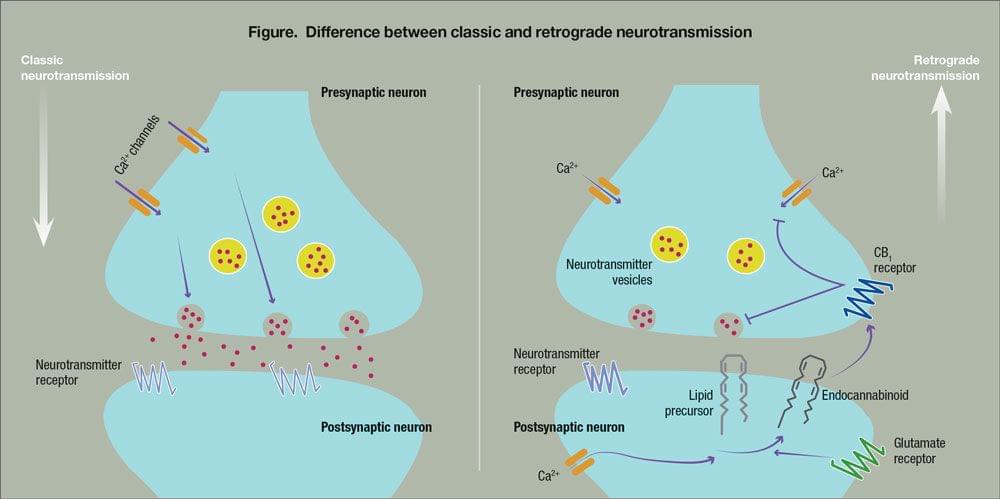Can an early introduction to basic astronomy knowledge help solve the root cause of ignorance and human suffering?



Our immune systems are at war with cancer. This animation reveals how monoclonal antibodies can act as valuable reinforcements to shore up our defences – and help battle cancer.
You can find more on this topic at http://www.nature.com/milestones/antibodies.
Nature Research has full responsibility for all editorial content, including Nature Video content. This content is editorially independent of sponsors.
Sign up for the Nature Briefing: An essential round-up of science news, opinion and analysis, free in your inbox every weekday. https://go.nature.com/371OcVF

😗 year 2017.
Psychiatrists and other behavioral health professionals need to better understand the relationship between cannabis and mental disorders so that they can respond to increasing medical and recreational marijuana use among their patients. More than half of states now allow for medical use, and 8 states and the District of Columbia have legalized adult personal or recreational use.
Knowledge about herbal cannabis, the endocannabinoid system, and cannabinoid pharmacology is rapidly expanding. However, compared with the literature on non-medical cannabis use, the scientific literature on therapeutic use of cannabis is underdeveloped, as noted in a recent systematic review of medical cannabis and mental health.1 Although herbal cannabis has a long history of medicinal use, its federal prohibition under the Controlled Substances Act of 1970 with Drug Enforcement Administration Schedule I status has focused the federally supported cannabis research agenda for half a century on the potential harms rather than on the historically acknowledged therapeutic benefits of this complex plant.
Medicinal potential of cannabis
For the sake of this discussion, herbal cannabis refers to plant material derived from the flowering tops of Cannabis indica, sativa, or ruderalis biotypes. Indica, sativa, and indica-sativa hybrid strains are commonly available on the medicinal cannabis market.

Since its launch in November by San Francisco-based OpenAI, ChatGPT has taken the world by storm. The conversational chatbot can code, write essays, and even function as a search engine, among other tasks.
But this isn’t some futuristic vision of what ChatGPT will do. The business world has already bought in when it comes to AI in general, and ChatGPT in particular.
“It can create anything that we thought thus far was unique to human intelligence or creativity, whether that is interacting with us in a chatbot form, whether that is generating new content, whether it’s images, video,” Nina Schick, adviser, speaker, and A.I. thought leader, recently told Yahoo Finance.



Summary: Researchers are turning to artificial intelligence to find novel drugs that can block kappa opioid receptors with the hope to alleviate opioid addiction.
Source: Biophysical Society.
Approximately three million Americans suffer from opioid use disorder, and every year more than 80,000 Americans die from overdoses.

Generative AI is a catch-all term describing programs that use artificial intelligence to create new material from complex queries, such as “write a poem about monkeys in the style of Robert Frost” or “make an image of pandas draped over living room furniture.”
While AI more generally refers to software programs that can make themselves better by “learning” from new data, and which have been used behind the scenes in all kinds of software for years, generative AI is a fresh consumer-facing spin on the concept.
About 1,000 people from all over the world, including AI researchers and content marketers, attended Tuesday’s Gen AI Conference, which was organized by startup Jasper. It was a lavish affair, held at Pier 27 on the Embarcadero, overlooking San Francisco Bay.

LCARS is the fictional computer operating system used by Starfleet starships in several Star Trek TV shows and films. The system is currently displayed in the animated comedy Trek series Lower Decks. Now, one intrepid fan has adapted the Lower Decks version of LCARS into a “crazy fan project:” Project RITOS.
RITOS is a webpage that recreates the LCARS system. It’s a fun little site to poke around on. But, since this is just a recreation, there’s no actual functionality you can incorporate onto your computer. As the RITOS About page states, you just “point & click & watch. There are no goals nor wrong thing to do here. It’s just a mindless site.”
It may be mindless, but it’s also a faithful recreation of the LCARS system as depicted not just in Star Trek: Lower Decks but also in The Next Generation, Deep Space Nine, and Voyager. Users can click around into various displays that show crew quarters, a ship map of the Cerritos (the Federation starship in Lower Decks), JWST (James Webb Space Telescope) images, and a Sick Bay screen. There are plenty of fun things to click on and little easter eggs to uncover for dedicated Trek fans.